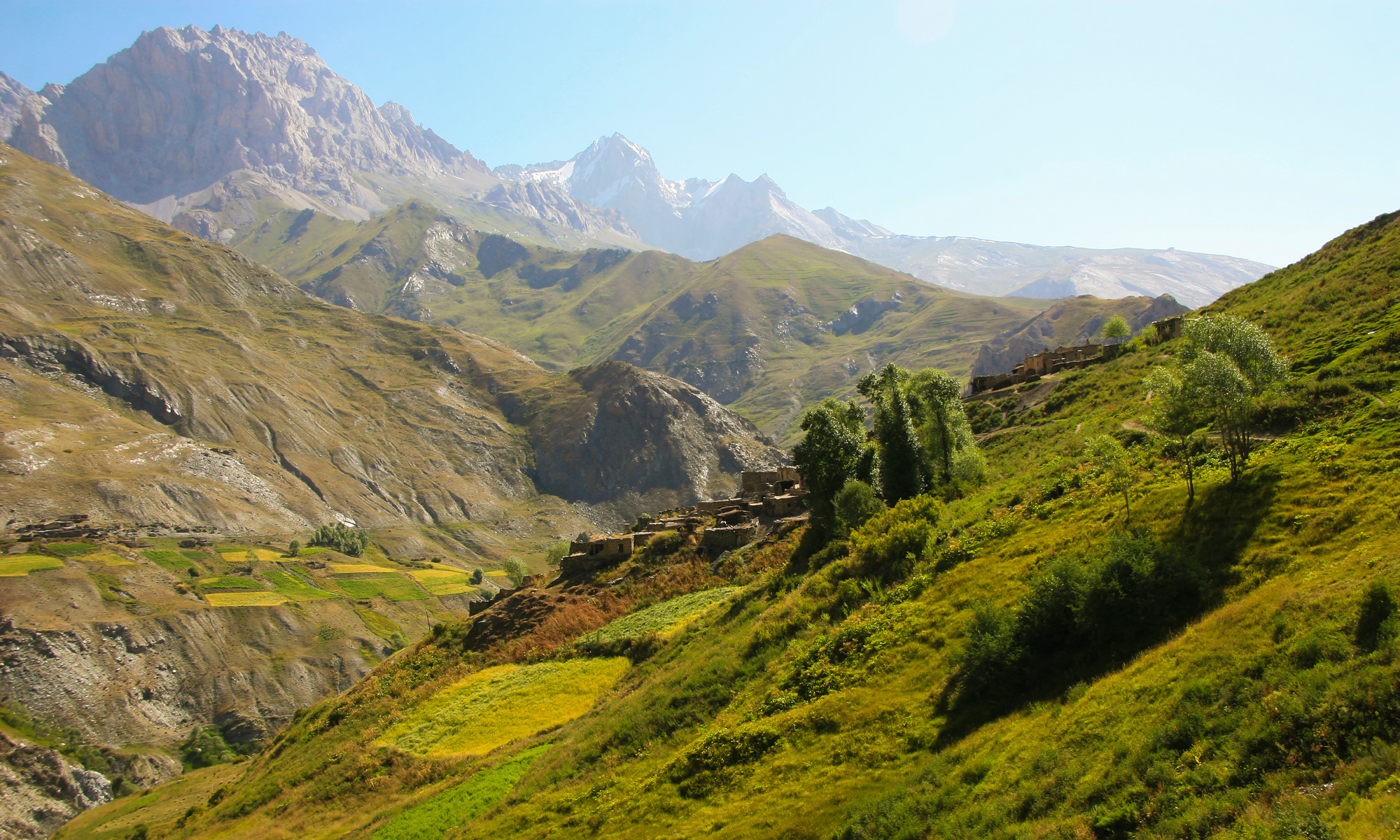In winter, when the mountains seal their ridges and the Yaghnob sky stoops low enough to touch the ground, speech becomes sparse. The landscape quiets. But the body—adorned, wrapped, layered—begins to speak.
In the Yaghnob Valley, protection never relied solely on words. It lived in thread, metal, gesture. It wrapped around children’s wrists, swung from a mother’s ear, or lay stitched quietly beneath a sleeve. These were not ornaments. They were guardians.
In Yaghnobi culture, protection was often unspoken—but always present. Without formal doctors or sanctioned ritual specialists in many villages, objects carried the weight of medicine. A spindle might shield against misfortune. A copper ring could absorb illness before it reached the heart. A crimson thread tied around a baby’s wrist might turn back the cold itself.
These were never mere accessories. A multicolored cord tied to a cradle beam wasn’t decoration—it was a signal, a shield. A woman’s earring wasn’t just for beauty—it reflected light, a flash meant to repel spiritual darkness in the depth of winter.
Spinning was more than craft. It was continuity.
In Khromov’s morphology notes, verbs like ресидан (residan) — to spin, and рехтан (rekhtan) — to drop or cast (used in charm-making), suggest that everyday actions doubled as ritual acts. Thread, or ришта (rishta), bound fabric, but also held memory, body, and spirit.
Spindles—рехтгарӣ (rekhtgarī)—carried special significance. Oral accounts describe how unfinished spindles were never left exposed overnight, particularly after childbirth. An open thread could invite interference—what some might call spirits, others misfortune. To spin was to seal. To break a thread was to rupture protection.
As one Yaghnobi proverb warns:
“She who breaks her thread opens the road to pain.”
If thread held form, color held force.
Red threads were tied to infants, goat horns, window frames. Black cloth was draped across the ill or burned to smoke out illness. Blue beads sometimes dangled from collars, believed to settle feverish tempers.
Color, in this context, spoke louder than prayers. Where formal clergy were absent, a red thread whispered its own protection.
In Yaghnob’s highlands, faith was tangible. With no easy access to mosques or religious leadership, villagers practiced what might be called embodied belief. A woman might sew a dried pomegranate seed into her child’s hem. A man might tuck a pinch of mountain salt into his pocket before a long journey. These were not superstitions—they were survival strategies.
They whispered through object and gesture: We know what protects us. And we carry it with us.
Even now, elders recall:
“In the cold, it wasn’t just the coat that saved you.
It was what was stitched inside it.”
The world may no longer speak in thread and spindle, but in the Yaghnob Valley, traces remain. A wrist tie here, a remembered blessing there. The language of protection lingers in verbs like молидан (mōlidan) — to knead, to smear—still used when preparing poultices or bread, both seen as healing.
Today, as scholars and returnees document the practices that once shielded bodies and warmed spirits, what emerges is not nostalgia. It is continuity. It is evidence that meaning does not vanish—it recedes into things we carry, wear, and weave into the everyday.
